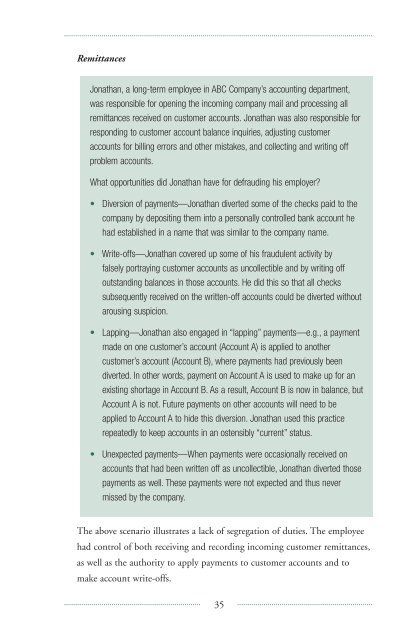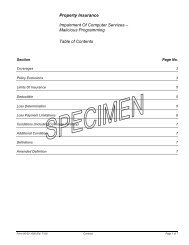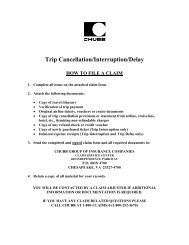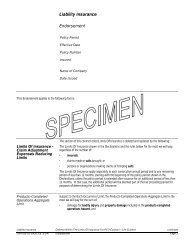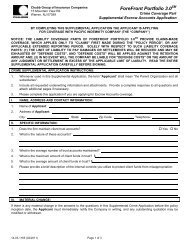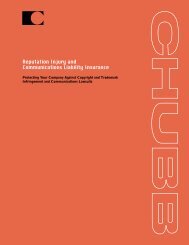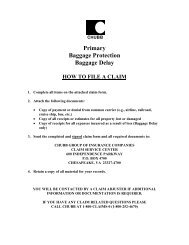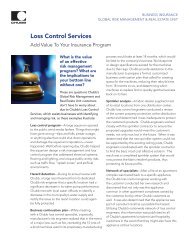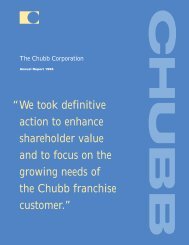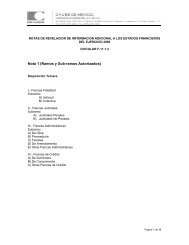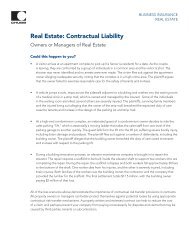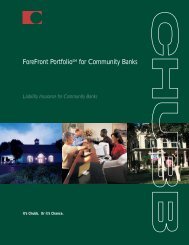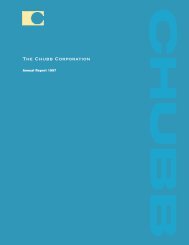Guide to Preventing Workplace Fraud - Chubb Group of Insurance ...
Guide to Preventing Workplace Fraud - Chubb Group of Insurance ...
Guide to Preventing Workplace Fraud - Chubb Group of Insurance ...
You also want an ePaper? Increase the reach of your titles
YUMPU automatically turns print PDFs into web optimized ePapers that Google loves.
Remittances<br />
Jonathan, a long-term employee in ABC Company’s accounting department,<br />
was responsible for opening the incoming company mail and processing all<br />
remittances received on cus<strong>to</strong>mer accounts. Jonathan was also responsible for<br />
responding <strong>to</strong> cus<strong>to</strong>mer account balance inquiries, adjusting cus<strong>to</strong>mer<br />
accounts for billing errors and other mistakes, and collecting and writing <strong>of</strong>f<br />
problem accounts.<br />
What opportunities did Jonathan have for defrauding his employer?<br />
• Diversion <strong>of</strong> payments—Jonathan diverted some <strong>of</strong> the checks paid <strong>to</strong> the<br />
company by depositing them in<strong>to</strong> a personally controlled bank account he<br />
had established in a name that was similar <strong>to</strong> the company name.<br />
• Write-<strong>of</strong>fs—Jonathan covered up some <strong>of</strong> his fraudulent activity by<br />
falsely portraying cus<strong>to</strong>mer accounts as uncollectible and by writing <strong>of</strong>f<br />
outstanding balances in those accounts. He did this so that all checks<br />
subsequently received on the written-<strong>of</strong>f accounts could be diverted without<br />
arousing suspicion.<br />
• Lapping—Jonathan also engaged in “lapping” payments—e.g., a payment<br />
made on one cus<strong>to</strong>mer’s account (Account A) is applied <strong>to</strong> another<br />
cus<strong>to</strong>mer’s account (Account B), where payments had previously been<br />
diverted. In other words, payment on Account A is used <strong>to</strong> make up for an<br />
existing shortage in Account B. As a result, Account B is now in balance, but<br />
Account A is not. Future payments on other accounts will need <strong>to</strong> be<br />
applied <strong>to</strong> Account A <strong>to</strong> hide this diversion. Jonathan used this practice<br />
repeatedly <strong>to</strong> keep accounts in an ostensibly “current” status.<br />
• Unexpected payments—When payments were occasionally received on<br />
accounts that had been written <strong>of</strong>f as uncollectible, Jonathan diverted those<br />
payments as well. These payments were not expected and thus never<br />
missed by the company.<br />
The above scenario illustrates a lack <strong>of</strong> segregation <strong>of</strong> duties. The employee<br />
had control <strong>of</strong> both receiving and recording incoming cus<strong>to</strong>mer remittances,<br />
as well as the authority <strong>to</strong> apply payments <strong>to</strong> cus<strong>to</strong>mer accounts and <strong>to</strong><br />
make account write-<strong>of</strong>fs.<br />
35


